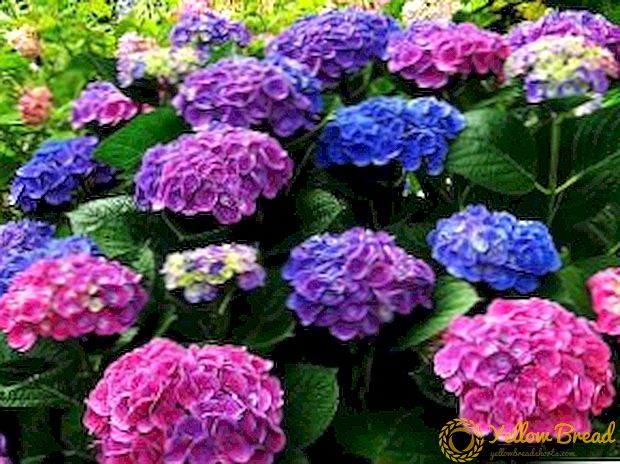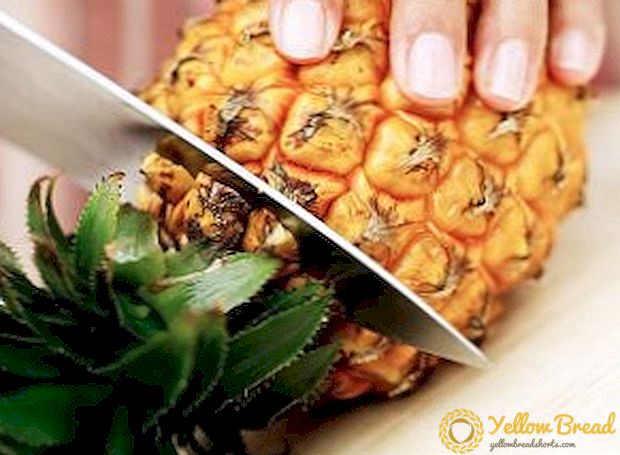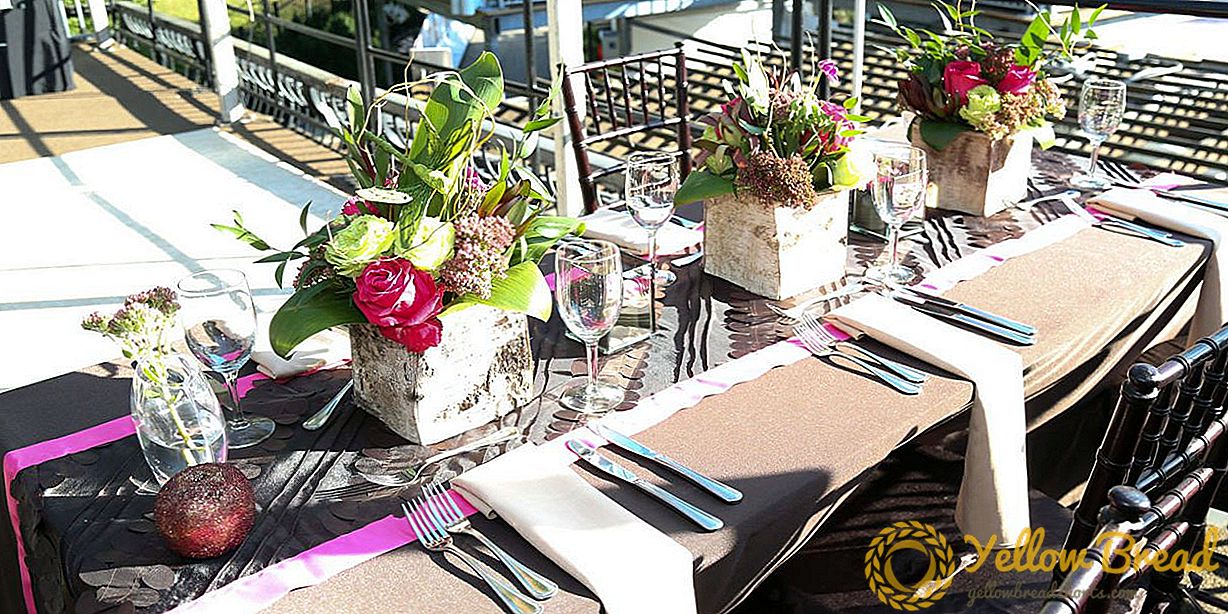 When we speak of cardamom, first of all, the spice is remembered, the cultivation of which occurs somewhere far away. However, cardamom is also an attractive plant with beautiful leaves and flowers. From this article you will receive answers to questions about how to grow cardamom at home and what you need for it.
When we speak of cardamom, first of all, the spice is remembered, the cultivation of which occurs somewhere far away. However, cardamom is also an attractive plant with beautiful leaves and flowers. From this article you will receive answers to questions about how to grow cardamom at home and what you need for it.
- Cardamom description
- Is it possible to grow cardamom at home?
- Where to place cardamom
- Choosing lighting for cardamom
- What is the temperature and humidity of the cardamom?
- How to choose a substrate for planting cardamom
- Reproduction of cardamom: how to plant at home
- Division of rhizome
- Cardamom crop
- Cardamom cutting
- Features care for cardamom at home
- How to water the plant
- Fertilizing cardamom
- When need cardamom transplant
- Features flower trimming
- Diseases and pests of cardamom
Cardamom description
Eletaria cardamomum (Elettaria cardamomum) - An evergreen perennial plant with a fleshy thick root and two types of stems. One of the shoots is false, directed upwards, carrying alternate lanceolate dark green leaves, 60 cm in length and 8 cm in width.This second stem is creeping and leafless. At present there are flowers picked up in the brush. The flowers are small in size, one petal is white with a purple pattern in the middle, and the remaining flowers have a pale green color. After their flowering, fruits appear - boxes of three-celled form with a length of 2 cm. Seeds are fragrant, black, ribbed. 
Is it possible to grow cardamom at home?
Cardamom is a very thermophilic plant. It is not able to endure a temperate climate with its winter negative temperatures, so its cultivation is possible only at home. For us, its breeding is acceptable only in greenhouses, in apartments, in houses, in winter gardens.
Where to place cardamom
Cardamom is a wildly growing plant, not exceeding one meter in height at home, with strongly elongated dark green leaves. Since in height and width it grows almost equally, then in the room for it you need to take the appropriate area and volume.
Choosing lighting for cardamom
 For the natural processes of vital activity cardamom requires a large amount of bright, but indirect, and diffused sunlight, and in the winter as well as in summer. Place it in a dwelling under diffused light or in partial shade.
For the natural processes of vital activity cardamom requires a large amount of bright, but indirect, and diffused sunlight, and in the winter as well as in summer. Place it in a dwelling under diffused light or in partial shade.
What is the temperature and humidity of the cardamom?
Being a heat-loving plant, cardamom feels well in the coveted elements at a summer temperature of 20-25 ° C, and in winter, during a period of rest, at 12-15 ° C. Cardamom responds responsively to spraying, loves to take a shower or when its leaves are treated with a wet sponge from dust.
How to choose a substrate for planting cardamom
Professional flower growers recommend the use of a mixture of turf and humus soil and sand while maintaining the ratio, respectively, of 2: 2: 1 for growing cardamom.But other sources believe that the mixture for these plants should be rich not with humus, but with humus, therefore, it is recommended to buy already-made functional mixtures, and the pH should be kept within 5.5-6.
Reproduction of cardamom: how to plant at home
Cardamom (another name for eletariya) has the ability to multiply in three ways: seeds, separation of rhizomes and using rooting cut apical cuttings.
Division of rhizome
Rhizome of cardamom for reproduction is divided when transplanted, cutting it with a knife in such a way that at least two buds and two growing root slices are present on each separated part of the root. The formed sections on the roots must be treated with crushed activated carbon (Carbo activatus) and immediately placed in a previously prepared substrate. 
Cardamom crop
Many people wonder how can you grow cardamom from seed? When sowing cardamom, it is necessary to lower the seeds into the ground to a depth of twice the width of the seed, after which it should be sprinkled with earth, lightly watered and covered with glass or film. Landing should be kept at 25-28 ° C to be well lit. Since cardamom seeds quickly lose their germination, only freshly harvested seeds should be planted. Expected shoots should appear in 6-7 weeks. After that, we continue to monitor the humidity and temperature.
The first dressing can be done in two months, since in the ground there are enough useful substances. Closer to late autumn, the temperature of the content is reduced and watering is reduced, the leaves will turn yellow, and growth will slow down. In the spring, cardamom is taken out of hibernation, the cultivation of which from seeds at home, as you see, is not particularly difficult.
Cardamom cutting
 When grafting, the top cuttings of cardamom after cutting and processing the cut with a solution of the root growth accelerator are placed in water. When roots are formed, they are transferred to a prepared container with a substrate, watering is started, sprayed - and then ordinary care follows. According to other sources, the apical cuttings of cardamom root well at a temperature of 20-25 ° C also in wet sand, and after the formation of roots, they are transplanted into a permanent pot and are subjected to normal care.
When grafting, the top cuttings of cardamom after cutting and processing the cut with a solution of the root growth accelerator are placed in water. When roots are formed, they are transferred to a prepared container with a substrate, watering is started, sprayed - and then ordinary care follows. According to other sources, the apical cuttings of cardamom root well at a temperature of 20-25 ° C also in wet sand, and after the formation of roots, they are transplanted into a permanent pot and are subjected to normal care.
Features care for cardamom at home
When caring for a cardamom plant, you need to pay attention to its leaves, constantly removing those that begin to fade or turn yellow. In case the pot in which it is located becomes cramped, be sure to transplant cardamom. When grown in artificial conditions, you are unlikely to harvest it. However, cardamom leaves also contain essential oils, and it is perfectly acceptable to use them as a source of flavor.
How to water the plant
In the summer, during the active period of the life cycle, cardamom requires regular watering, which should result in a constant and uniform moisture content of the ground cover. No water retention in the root system of the ginger plant is permitted. In winter, during the passive period of plant life, watering is reduced, but care must be taken to ensure that the soil does not dry out.
The lack of watering can lead to drying and the acquisition of leaves of brown color, in this case, watering gradually increase, watching the plant.If the leaves of cardamom begin to turn yellow, then this is a consequence of bright sunlight, which needs to be shaded.
Fertilizing cardamom
 In the dynamic spring-summer life period, in order to increase the fertility of the soil and enhance microbiological activity in it, it is recommended to feed it every two weeks with organo-mineral fertilizers for vegetable crops. In winter, the time between supplements is up to three weeks.
In the dynamic spring-summer life period, in order to increase the fertility of the soil and enhance microbiological activity in it, it is recommended to feed it every two weeks with organo-mineral fertilizers for vegetable crops. In winter, the time between supplements is up to three weeks.
With an excess of fertilizers, especially those containing nitrogen, the condition of cardamom worsens. The use of bi-weekly "Ferovita" and "Zircon" in the composition of the sprayed solution will increase the resistance of cardamom to dryness during the heating season.
When need cardamom transplant
Cardamom has a specific feature to grow very quickly, especially inherent in its fleshy root, so a transplant with the aim of separating newly grown roots is carried out annually.
Features flower trimming
The main rules for pruning plants include:
- To pull the trunk up side shoots are removed completely.
- Circumcision of the shoot, leaving two or three kidneys on it will cause the cardamom to bush.
- Asymmetric branches and going beyond the border of a given shape must be cut off.
- Shoots are cut, directed inside the crown and interfering with each other.
- Pinching the top usually leads to uniform growth of the shoots.
- When forming pruning, follow the direction of growth of the kidneys.
- When sprouts grow to the desired level, they pinch (by removing the top above the last leaf).
- Pruning should be done annually at the beginning of the growing season.
- Top dressing, including by spraying, after pruning will help the plant to expel new shoots.
Diseases and pests of cardamom
 When cardamom is kept in a room with a small amount of moisture, the eletarius may be attacked by a spider mite or scytum. To combat spider mites, it is possible to use insecticidal agents Vermitek, Fitoverm, Actofit, etc. several times with an interval of two weeks. Repeated spraying with drugs is caused by the fact that they do not act on the pest eggs.
When cardamom is kept in a room with a small amount of moisture, the eletarius may be attacked by a spider mite or scytum. To combat spider mites, it is possible to use insecticidal agents Vermitek, Fitoverm, Actofit, etc. several times with an interval of two weeks. Repeated spraying with drugs is caused by the fact that they do not act on the pest eggs.
When fighting the shield, first of all, you need to isolate the plant, remove insects with a cotton swab, wash it with soapy water or tobacco extract, wash the solution and let it dry, then spray the cardamom with an insecticide solution, cover with polyethylene for 30 minutes and wash the preparation in two days. This procedure must be repeated weekly until complete destruction of insects.






